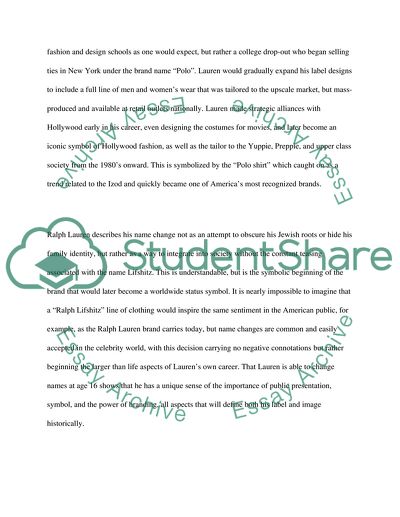Cite this document
(Ralph Lauren: The Man, the Vision, the Style Book Report/Review - 1, n.d.)
Ralph Lauren: The Man, the Vision, the Style Book Report/Review - 1. Retrieved from https://studentshare.org/visual-arts-film-studies/1751202-ralph-lauren-the-man-the-vision-the-style
Ralph Lauren: The Man, the Vision, the Style Book Report/Review - 1. Retrieved from https://studentshare.org/visual-arts-film-studies/1751202-ralph-lauren-the-man-the-vision-the-style
(Ralph Lauren: The Man, the Vision, the Style Book Report/Review - 1)
Ralph Lauren: The Man, the Vision, the Style Book Report/Review - 1. https://studentshare.org/visual-arts-film-studies/1751202-ralph-lauren-the-man-the-vision-the-style.
Ralph Lauren: The Man, the Vision, the Style Book Report/Review - 1. https://studentshare.org/visual-arts-film-studies/1751202-ralph-lauren-the-man-the-vision-the-style.
“Ralph Lauren: The Man, the Vision, the Style Book Report/Review - 1”, n.d. https://studentshare.org/visual-arts-film-studies/1751202-ralph-lauren-the-man-the-vision-the-style.


